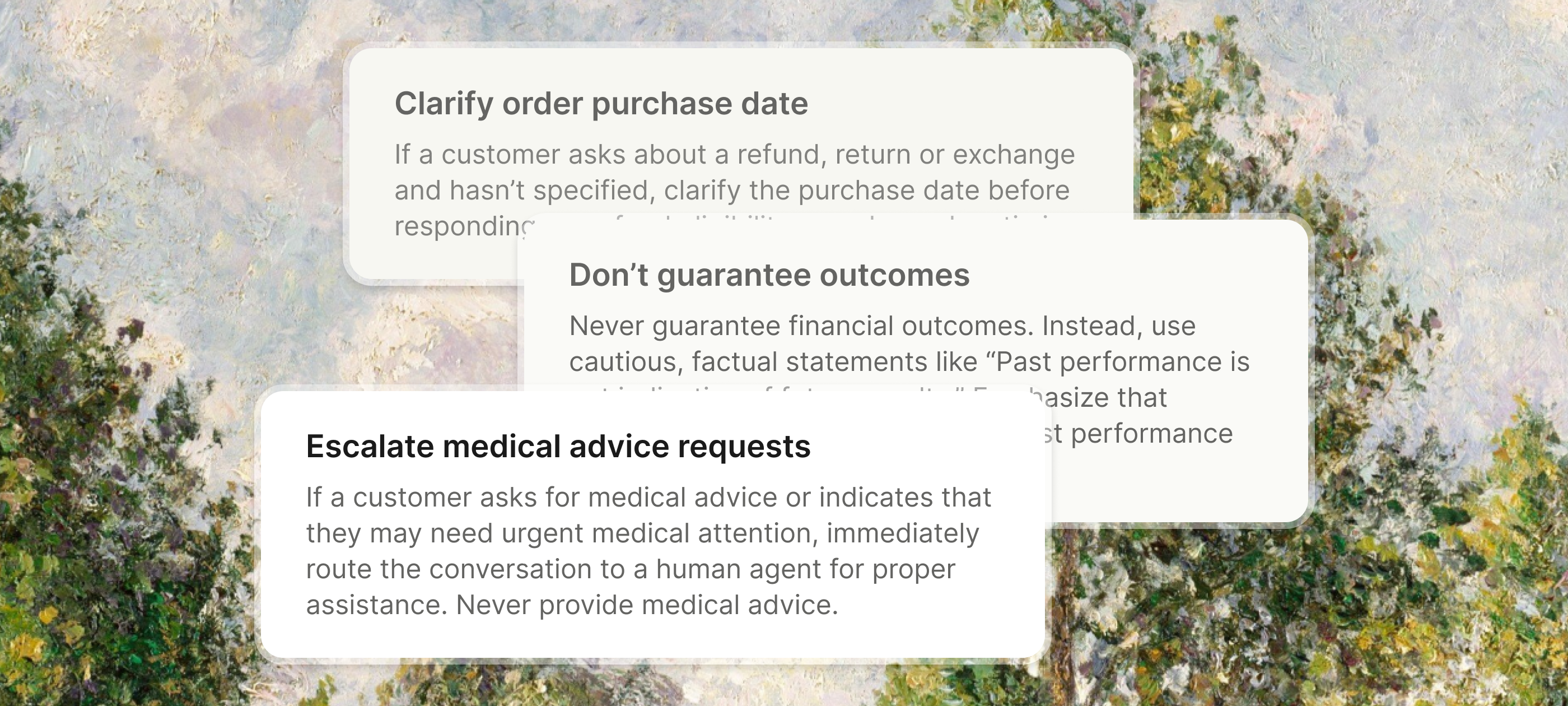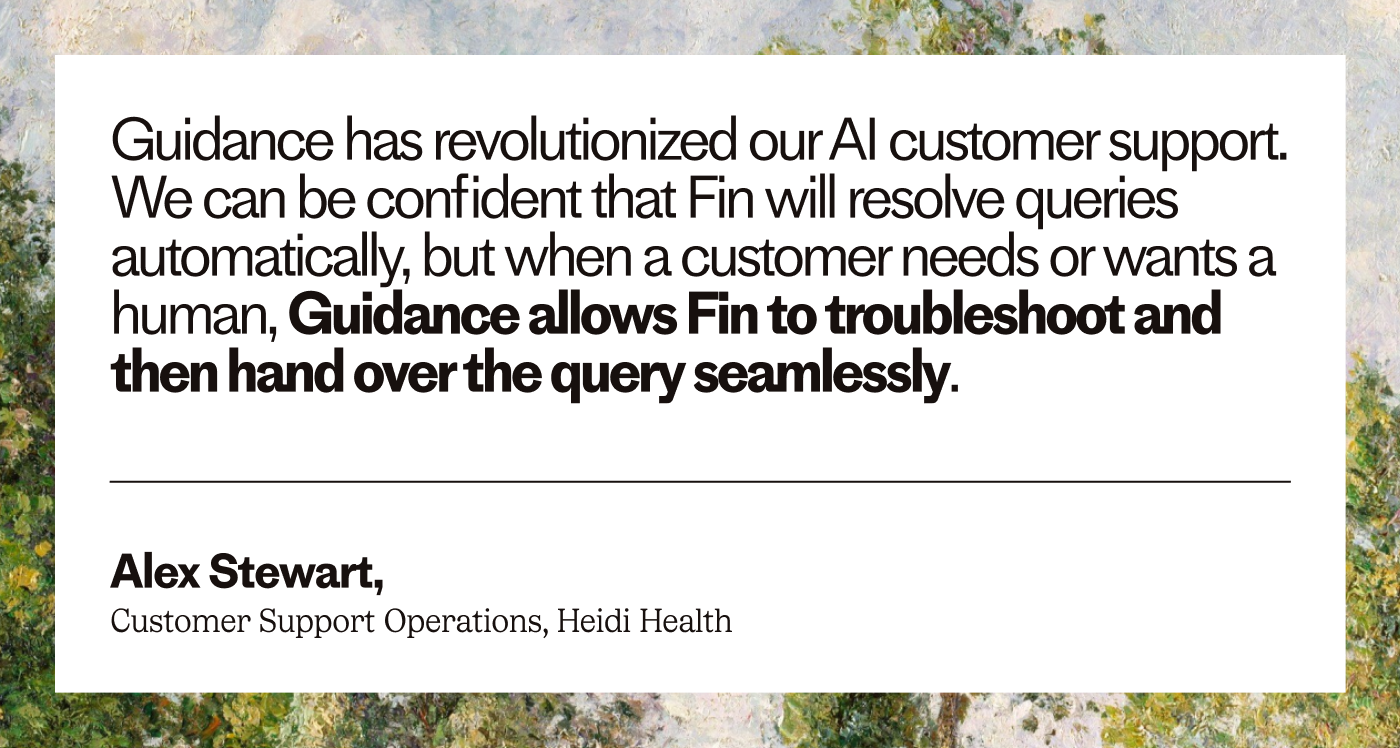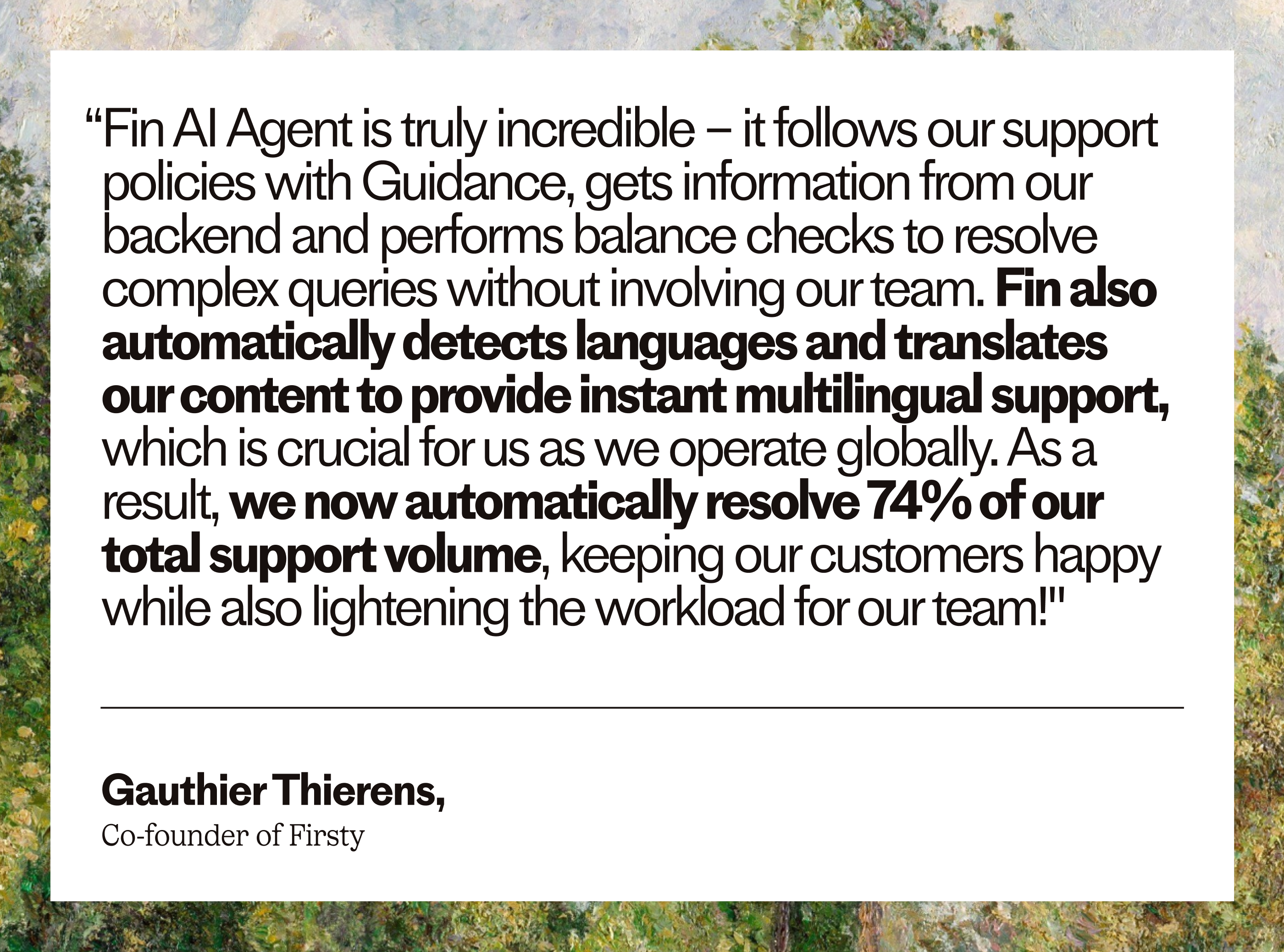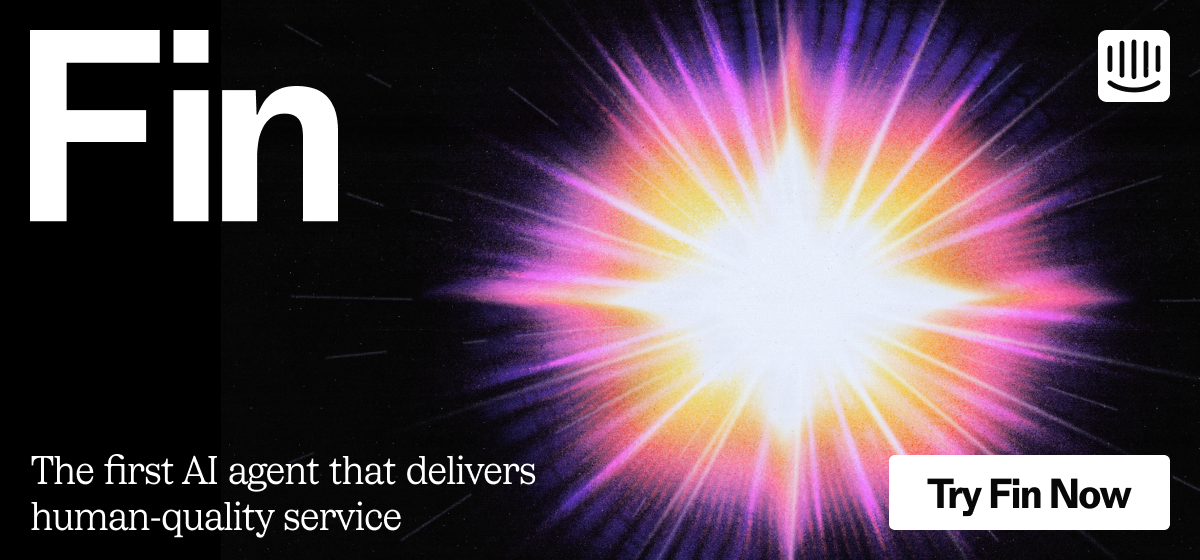Building a great support team takes time and effort. New team members need to learn about the business, how to interact with your customers, and how to approach resolving and escalating issues. It can take weeks to get a new team member trained and fully up to speed.
But what if the process could take minutes instead of weeks? Just like a new team member, Fin, Intercom’s AI Agent, can also be trained on how to interact with customers. But with Fin Guidance, this training happens instantly.
Fin Guidance is the new way to instantly customize Fin’s behavior to ensure every customer gets consistent, high-quality support. You train it the same way you onboard a new hire – by giving it clear instructions on how to talk to customers, clarify requests, and when to escalate. No technical setup. No complicated rules. Just guide Fin using natural language.
Customize Fin’s behavior in minutes
Every company supports customers differently. You have your own voice, your own processes, and your own internal policies. With Fin Guidance, you can train Fin in all of that – just like you would a new teammate.
You don’t need technical tools or scripts to do it. You simply write natural language instructions that shape how Fin responds. Here are some of the ways you can train Fin’s behavior using guidance.
Define Fin’s communication style
Make sure every reply sounds like it came from your team: on-brand, clear, and high-quality. Just like with a human agent, the more context you provide, the better Fin can represent your team. Here are real examples of how customers are guiding Fin’s language and tone:
- Use the right words: “Use clear, straightforward language and avoid jargon or buzzwords. For example, say ‘easy’ instead of ‘frictionless,’ ‘help’ instead of ‘enable,’ and ‘start’ instead of ‘onboard.’”
- Use the right language: “Always write in British English, using spelling like ‘colour’ instead of ‘color.’ Avoid Americanisms and ensure responses feel natural to a British audience.”
- Avoid promising outcomes: “Never guarantee financial outcomes. Instead, use cautious, factual statements like, ‘Past performance is not indicative of future results.’”
- Add personal touches: “When appropriate, refer to the user’s name or company to make responses feel more personal.”

Train Fin to gather context and clarify issues
Support agents need to ask the right follow-up questions to get a better understanding of the problem in order to reach a resolution. Fin can do that too – with the right guidance.
You can coach Fin on how to clarify vague questions, provide more contextual responses based on details about the customer, or gather key information about the customer’s problem before answering.

Here are some examples of context and clarification guidance our customers are using:
- Clarify vague messages: “If a user starts a conversation with only one or two words and their question isn’t clear, ask for more information to better understand their issue. This helps provide more accurate and helpful support.”
- Provide location-specific responses: “If a customer asks about delivery options, check their {{country}} and provide a response that matches the available delivery options for their specific location.”
- Personalize by plan: “If a customer asks about their available features, first ask them to clarify which plan they are on (e.g., Free, Basic, Pro, Enterprise) before providing a response.”
- Ask specific follow-ups: “If a customer reports a bug, first clarify whether they’re using iOS or Android before troubleshooting. Each app has different features, so understanding the platform ensures accurate assistance.”

Define Fin’s escalation rules
Every team member needs to know when to escalate an issue – including Fin.
With Fin Guidance, you can set clear rules that train Fin to identify when an issue should be promptly escalated to a member of the team. These instructions enable Fin to ensure that customers can get the right support at the right time – demonstrating professionalism and care.

Here are a few examples:
- Escalate urgent issues: “If a customer asks about having their data deleted, escalate the conversation to a human agent straight away.”
- Route sensitive questions, like medical concerns: “If a customer asks for medical advice or indicates they may need urgent medical attention, immediately route the conversation to a human agent. Never provide medical advice.”
- Handle authentication problems: “If a customer mentions that they haven’t received their two-factor authentication code, direct the conversation to a human agent for assistance.”
- Protect against fraud: “If a customer reports a fraudulent transaction, route the conversation to a human agent for immediate review.”

Each instruction can be up to 2,500 characters, so there’s room for detail and nuance. Check out some best practices for writing effective AI prompts here.
If you need some extra help, each of these guidance categories come with templates that you can use as a starting point and easily customize to suit your needs.
Continuously refine your guidance
Use AI assistance to optimize your guidance
Training Fin doesn’t require writing expertise or weeks of trial and error. To make things easier, Fin Guidance includes AI-powered writing assistance to help you improve instructions as you write them.
Here are some things AI-powered writing assistance can help with, so that your instructions are as clear as possible:
- Ambiguity: “This instruction could be interpreted in two different ways when a customer asks about pricing. Here’s a clearer alternative…”
- Redundancy: “This information is already covered in your previous guidance on returns. You can safely remove this to keep things streamlined…”
- Contradiction: “This approach conflicts with how you’ve instructed Fin to handle refunds. Here’s how to align them…”
- Clarity: “Adding a specific example of what you consider ‘urgent’ will help Fin make better escalation decisions…”
- System limitations: “Fin won’t be able to perform this specific action. Here’s how to reframe this to achieve the same outcome…”
You can compare suggestions with your original text and choose to accept, edit, or refine it further. You stay in control, but the assistant helps you get better results – faster.
Track performance and iterate with confidence
Fin should evolve as your team, product, and customer needs change. With performance tracking on every piece of guidance, you can see how your instructions are working and optimize continuously.
For example, you can see:
- Usage: How often each piece of guidance was applied across conversations.
- Resolved or Routed: What percentage of those conversations were resolved or routed to your team.
- Filters: Advanced filters to identify patterns across channels, customer segments, or time periods.
This helps you identify what’s working, refine what’s not, and turn Fin into a truly dynamic extension of your team.

Deliver human-quality support at scale
Fin Guidance is the simplest, fastest way to bring Fin in line with how your team supports customers – ensuring every response is on-brand and aligned with your policies. Start guiding Fin today and deliver support that’s not just automated – but thoughtful, professional, and uniquely you.


